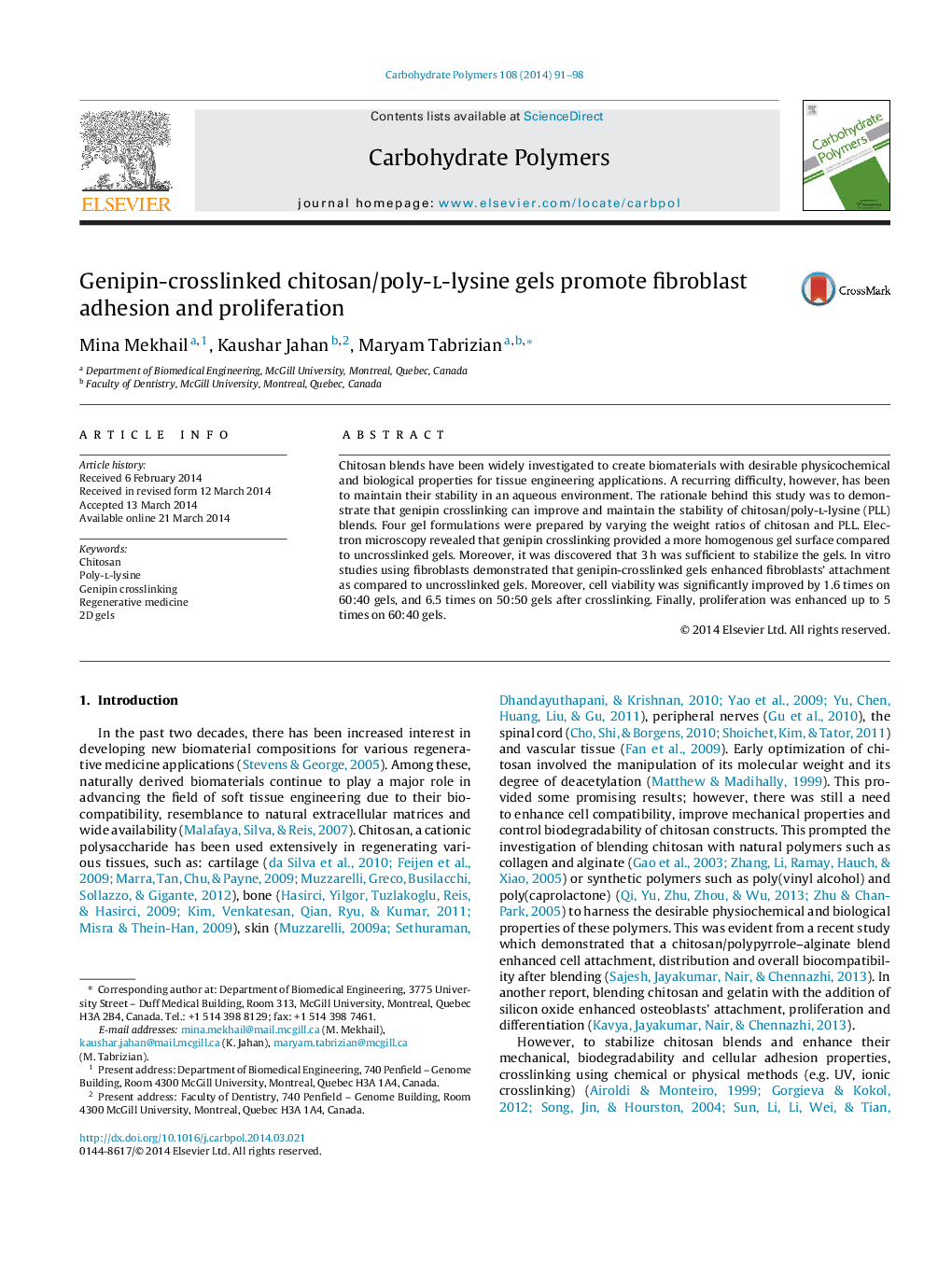| Article ID | Journal | Published Year | Pages | File Type |
|---|---|---|---|---|
| 1375499 | Carbohydrate Polymers | 2014 | 8 Pages |
•Chitosan/poly-l-lysine gels are fabricated and crosslinked using genipin.•Gels are more stable in an aqueous environment after genipin cross-linking.•Fibroblasts’ viability and attachment are significantly enhanced on crosslinked gels.•Fibroblast proliferate more readily on crosslinked gels containing 40% poly-l-lysine.
Chitosan blends have been widely investigated to create biomaterials with desirable physicochemical and biological properties for tissue engineering applications. A recurring difficulty, however, has been to maintain their stability in an aqueous environment. The rationale behind this study was to demonstrate that genipin crosslinking can improve and maintain the stability of chitosan/poly-l-lysine (PLL) blends. Four gel formulations were prepared by varying the weight ratios of chitosan and PLL. Electron microscopy revealed that genipin crosslinking provided a more homogenous gel surface compared to uncrosslinked gels. Moreover, it was discovered that 3 h was sufficient to stabilize the gels. In vitro studies using fibroblasts demonstrated that genipin-crosslinked gels enhanced fibroblasts’ attachment as compared to uncrosslinked gels. Moreover, cell viability was significantly improved by 1.6 times on 60:40 gels, and 6.5 times on 50:50 gels after crosslinking. Finally, proliferation was enhanced up to 5 times on 60:40 gels.
